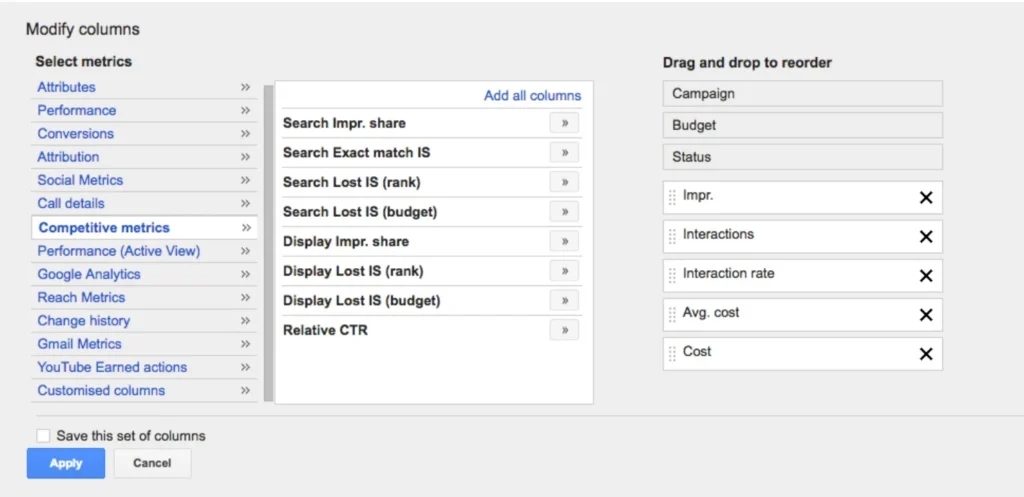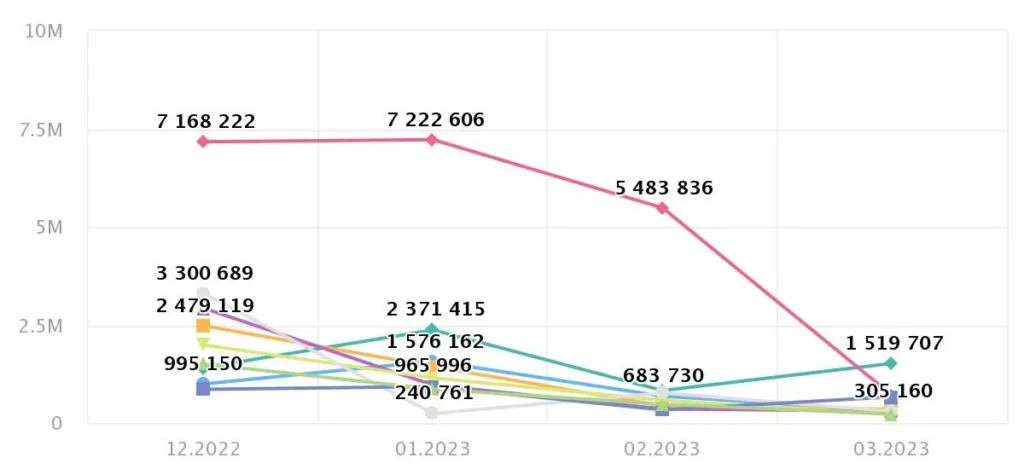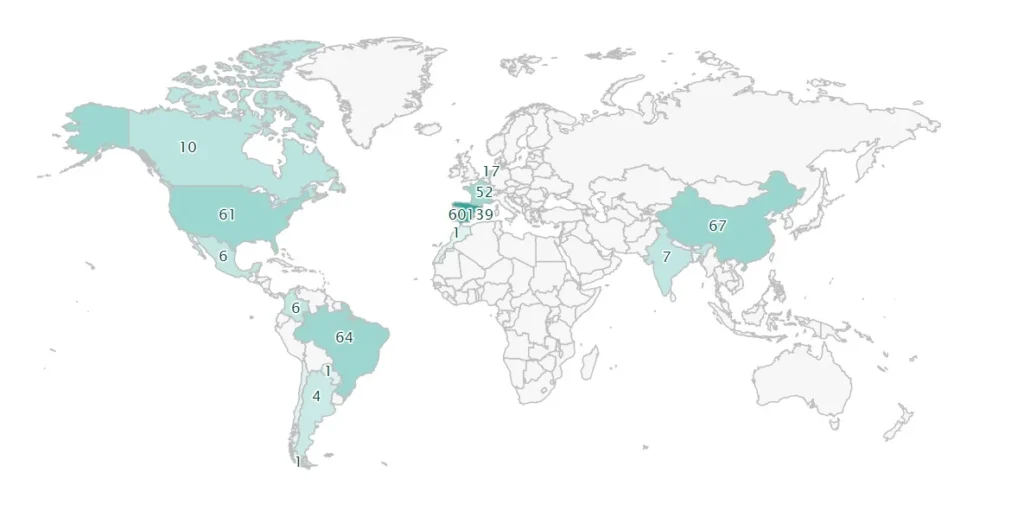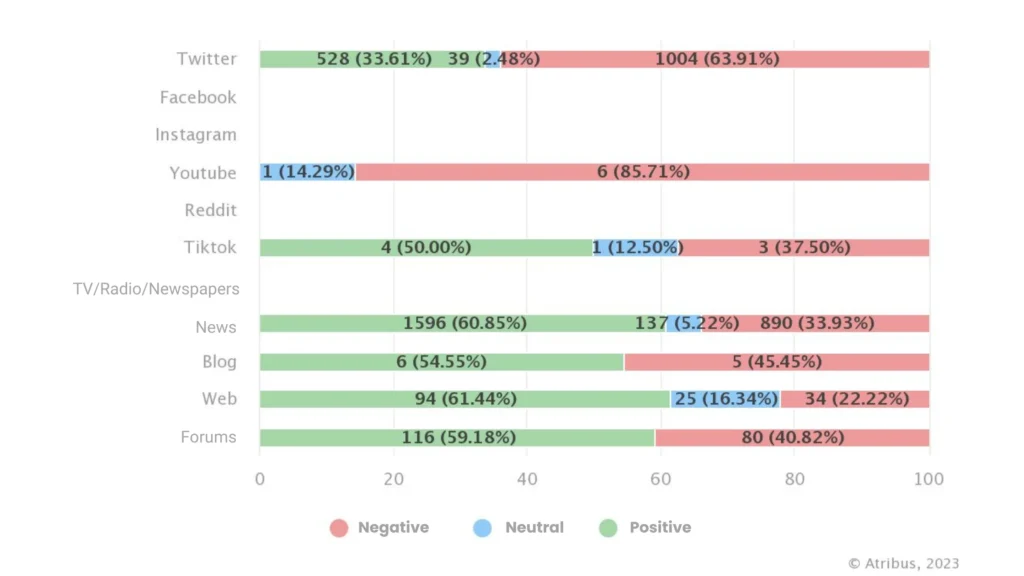One of the big questions for those starting out in the marketing world, and even for those who have been in it for a while, is what to measure. If you don’t know where to start, the process of measuring share of voice is a good way to begin. Here’s what it is and how you can measure it.
What is share of voice
It is very common to read that the share of voice calculation consists of determining how big is the advertising share of a company compared to the competition. This definition of share of voice is totally true, however, we could expand it as it is necessary to talk about organic search, PPC and social media platforms.
In fact, there are those who think that social media are the only way in which share of voice really happens, why? Well, basically because that’s where customers communicate. In the case of organic search and PPC there are those who refer to them as market share.
Whichever area of marketing you are focusing on, the calculation involves some variations of the original share of voice formula. We explain.
Advertising of your brand/Total market advertising = Share of Voice
Looking back, calculating share of voice was almost mission impossible because it was so imprecise. Spending had to be estimated and competing companies’ ads were overlooked.
However, with the advent of SEO, social media and PPC, the way to calculate it is much more accurate. In addition, there are tools that will take care of the cumbersome part and you can regularly check for changes in your share of voice.
SOV for organic search
If you don’t have the budget to hire a tool, you can calculate the share of voice (SOV) for organic search manually.
The first step is to make a list of keywords and competition, we recommend that you record the rankings in a spreadsheet. SEO platforms will be necessary for this case and save you time by making your job easier. In fact, some will show you the voice quota.
Your share of voice for a particular keyword will be the click-through rate (CTR). Although it should be clear that the CTR is difficult to determine precisely as it depends on several aspects, such as the results you are competing with, where a website that has greater recognition and is in the first position, will get a higher CTR than one with little recognition. Also, this rate can be influenced by Google’s recognition.
Anyway, you can get a rough idea with the Advance Web Ranking study. With it you can find the CTR of positions 1 to 20 and it also adjusts ads, intent and branding. When you include new data, it is automatically updated.
To calculate the share of voice for all keywords, you multiply the CTR with the average monthly search volume (the latter is taken from Google Analytics) for each of the keywords. And what is this good for? The data you get from this calculation will give you an idea of how much traffic your company can expect during the month for that keyword.
Brand Traffic/Total Market Traffic = Share of Voice
This is the data you have to calculate if you are looking to get an estimate of the total number of keywords. As we have explained above, there are tools that avoid this calculation to be done manually and give you the advantage of saving time. In addition, they have the advantage of working with data that comes from millions of keywords, which will allow you to get more insight into the organic search landscape.
You can also analyze how your keywords rank in comparison to others. Although it is true that you have to keep in mind that not all of your competitors have to focus on SEO, so as far as SEO is concerned, they will no longer be your competition.
Measure share of voice for PPC
What is PPC share of voice? Google AdWords offers the PPC equivalent of share of voice. This is the percentage of impressions and indicates the percentage of times your ads have been shown to users, compared to the number of times they could have been shown, depending on the keyword and campaign settings you have made.
To find out the percentage of impressions, you have to log in to your AdWords account and click on the campaigns tab. Once there, click on the columns option and choose “Modify columns” from the menu. Then click on Competitive Metrics and add the impression percentage columns you want to track. Take a look at this image to get a better grasp of it.

Calculate the SOV for social media
In order to calculate the share of voice on social media it’s necessary to collect the voice of the customer with the help of a social media analysis tool, such as the Atribus tool.
At this point it is very important to focus on the customer to measure the results of what they have invested in advertising and how visible they are being on search engines, specifically Google. Moreover, focusing on the customer gives you the opportunity to dig deeper and get useful information about the consumer, beyond analyzing the competition and brand tracking. With the help of this social listening tool, you can easily search on any mention of their company or product and competitor brands.
To find out how well recognized your brand is and how much it is talked about compared to the competition, you can start by doing a calculation on share of voice. In this study you’ll get a direct overview of which company appears in most online conversations.

When you go to calculate the SOV in online conversations, these tools allow you to differentiate by categories to automate the process and monitor everything that happens in social media.
Tracking the share of voice over the long term gives you the opportunity to learn a lot of information about the efforts your company has made with its marketing strategy. The initial analysis you do will provide you with information about the current moment, but if over a period of time you continue monitoring, you will be able to make an analysis of the performance of your campaigns.
With the help of the analysis of the peaks of conversation about your brand and the competition, you will be able to get an idea of how the campaign is going.

By compiling the information from the voice of the customer analysis, you can make various categorizations. For example, making a geographic segmentation where you can identify from where people talk about your brand or product.

In addition, you can collect such information about your consumers as their gender, age or profession, which will help you build an optimal strategy.
With active listening tools, it is possible to make a breakdown of the share of voice by differentiating channels. This fact can be an extra advantage to analyze the quality of the strategy being carried out in each of them.

Doing a SOV analysis on social media can provide you with a wealth of information about your brand and how consumers are perceiving it. In fact, by comparing sentiment you can see it more clearly. The tonality of online conversations gives you a clue as to how your strategy is working.
As we have seen throughout this post, measuring the share of voice of social media gives brands a unique opportunity to know at all times what and how people are talking about their company or the products it offers. As well as all the necessary data to be able to target your ideal customer.




